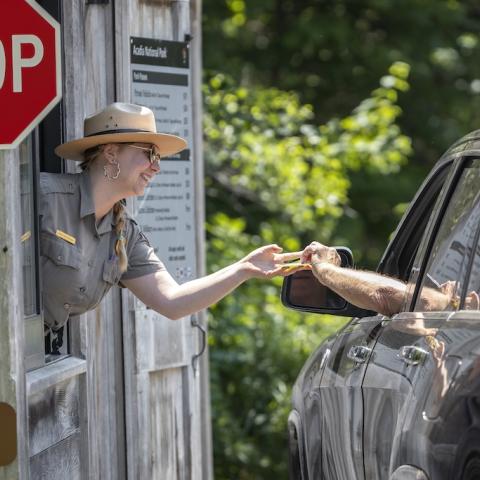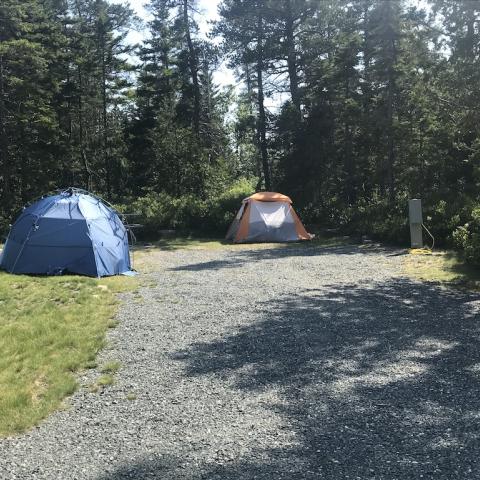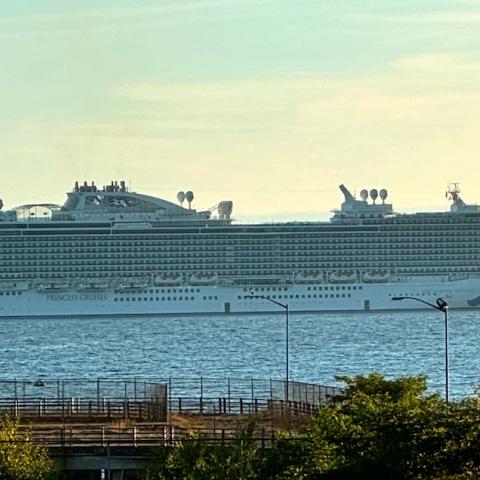
A finalized Transportation Plan for Acadia National Park limits to 1,460 the number of vehicles that can travel to the summit of Cadillac Mountain each day between mid-June and mid-October/NPS file
How you visit Acadia National Park in Maine will change under the park's finalized Transportation Plan, which calls for reservations to enter the park during peak season, the eventual phase-out of right lane parking, and improved cellular service across the 47,000-acre park.
The main change is the introduction of a "timed-entry" reservation system, one that will give visitors a specific window to enter Acadia from mid-June to mid-October. Initially, areas requiring such reservations include the Ocean Drive corridor, Cadillac Summit Road, and the Jordan Pond North Lot. The idea is that through such a reservation system parking areas in Acadia wouldn't be overwhelmed by visitors' vehicles.
The timed-entry system would provide reservation holders with a specific time window during which their vehicle would be permitted to enter the corridor or parking lot. Once inside the corridor or parking lot, there would be no restrictions on length of stay. The length of the initial entry window may be lengthened or shortened as park managers optimize the reservation system; however, it is estimated that initial timed-entry windows would be in 15-minute to 2-hour time blocks.
Under the plan finalized Thursday, up to 1,020 vehicles would be permitted per day on the Ocean Drive corridor, 850 vehicles would be allowed at the Jordan Pond House, and 1,460 vehicles could travel to the summit of Cadillac Mountain. Reservations would not be needed for cyclists or pedestrians.
Realizing that some visitors might resort to ride services, such as Uber or Lyft, the plan also calls for improving "cellular and Wi-Fi service throughout the park."
"Improved cellular service would enable the park to provide better visitor information and orientation and increase safety. It is also critical for many of the strategies proposed in the alternatives, including the use of app-based, on-demand ride services in the park," the final plan said. "Installation of this infrastructure would require additional site-specific planning and applicable compliance at the time that site planning is undertaken."
Like many national parks across the country, visitors have been flocking to Acadia in ever-growing crowds, at some times diminishing the experience due to congestion on roadways and crowds at popular sites in the park. The transportation plan seeks to find a middle ground.
Elsewhere in the National Park System, both Arches and Zion national parks in Utah are working on their own crowd-management plans, and Yellowstone National Park officials in Wyoming in 2017 opened a nearly 1-acre gravel parking area near the Fairy Falls Trail in a bid to reduce illegal parking along the road shoulders. Yosemite National Park staff in California not only have worked to improve parking in the Yosemite Valley, but has experimented with an approach to pace and send vehicles to the Arch Rock Entrance Station.
The reservation plan being implemented at Acadia would allow visitors to spend as much time as they desire in the park once they entered. But officials acknowledged some tinkering could be required as the plan is implemented, such as extending the reservation system to other areas of the park.
The park's release announcing the finalized plan indicated that it wouldn't be implemented on the ground until 2020. Park officials did not immediately return phone calls to provide additional details.




 Support Essential Coverage of Essential Places
Support Essential Coverage of Essential Places







Comments
A very well done plan. Shocking but it feels like a functional park service again
Grand Canyon waterline and now this - wow.
Let's hope this keeps going and the agency is allowed to make decisions and get things done.